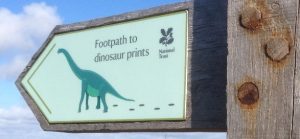Off the southern coast of Spain is the British Overseas Territory of Gibraltar. The landscape is dominated by the Rock of Gibraltar and the densely populated town lies at its base (Figure 1a and 1b). The rock itself is of key strategic importance and has a long history of occupation as it is located near the entrance to the Mediterranean Sea from the Atlantic Ocean. The earliest evidence of habitation is Neanderthal in age, but over the years it has been captured and held by numerous forces. Britain took control of Gibraltar in 1713, securing Britain’s withdrawal from the War of the Spanish Succession under the Treaty of Utrecht. Several unsuccessful attempts were made by Spanish monarchs to regain Gibraltar including the Great Siege of Gibraltar which saw the town almost entirely rebuilt in the aftermath.


Geology
Geologically the Rock of Gibraltar is a Jurassic Dolomitic Limestone promontory uplifted during the Miocene during the collision of the Africa and Eurasia plates. The resulting thrust sheet has largely been eroded leaving behind the lowermost part of the sheet resulting in the Gibraltar rock ages being reversed, with the oldest rocks at the top (Figure 2). The series of carbonate deposits, each some 400-600m thick, are interbedded with shale formations.

Being limestone, the rock contains a number of natural cave systems eroded by water passing through the rock. One of these, St Michael’s Cave, has been opened up for the public to enjoy with fantastic stalagmite and stalactite development. One of the stalactite’s which fell from the ceiling has been cross-cut which allows the layers of development to be observed (Figure 3, right).


These natural cave systems have been further exploited principally by the British Army, with around 55km tunnels within the rock (Figure 4). That is impressively nearly twice the surface road network! Early tunnels acted as communication passages between artillery positions housing guns, but in the 20th century these were extended further to provide an underground fortress capable of accommodating 16,000 men and their supplies. Tours are available to visit the tunnels which are still safe for entry.

The uppermost part of the rock is given over to a nature reserve. This allows man and ape to live in conjunction on the small land mass, and no trip to Gibraltar is complete without seeing the Gibraltar monkeys. These barbary macaques form the only wild monkey population in Europe, being originally from the mountains of Morocco. While they make occasional forays into the town, the army, who are responsible for their care, provide food largely ensuring they stay within the nature reserve. On their territory though any food is fair game (Figure 5 right) so be warned!


I hope you have enjoyed this brief introduction to Gibraltar, it is certainly a small place with a lot of interesting history which is well worth a visit.


